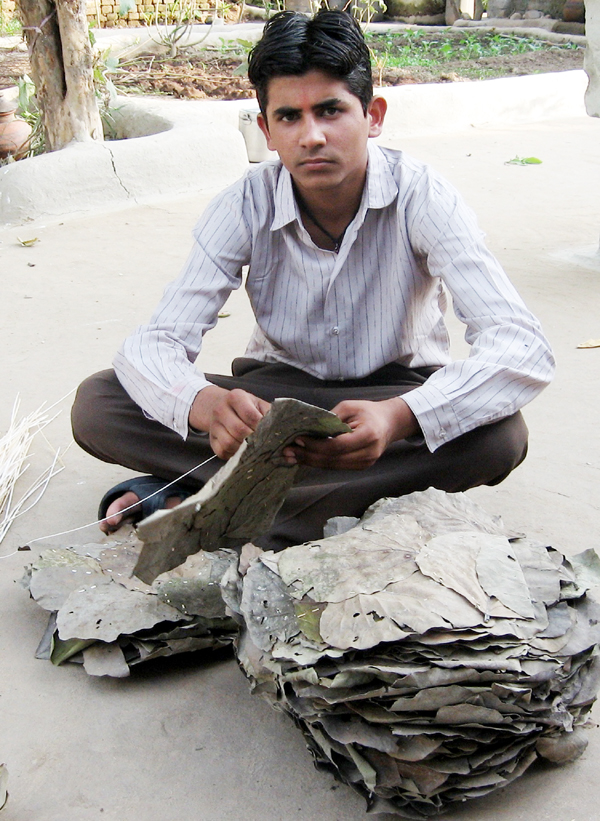Dr Narinder Paul and Dr P.S. Slathia
Doona and Pattal also called the poor-man’s vessels are being used by the people of Jammu region as feasting bowls and plates. These are the traditionally made from the leaves of Butea monosperma locally known as Palah in Dogri language and with the piths of khar (Saccharam munjo). In the sub-tropical belt of Jammu region, there is a particular community known as dasaalis and Kumhars who are engaged in making doona and pattal and take it as a profession. This practice is a source of livelihood for this community.
Palah is a wild grown tree in the forests and degraded lands of kandi region. The leaves of this tree have religious value in local customs/traditions also. As per mythology prevalent, the leaves of Palah (Butea monosperma) are also used in havan yagya and its bowls and plates locally known as doona & pattal are specially required during pittar-shraad (feeding the heavenly souls). On the occasion of local festival namely dharma dhihara; water filled in the pitcher and covered with the bowls of palah, filled with grains is donated with the faith that the same will be delivered to the donator after his journey to the heaven.
Besides, on marriage functions and other ceremonies, use of palah bowls and plates for serving lunch and dinner in rural and sub-urban areas has been a common practice since time immemorial. These are also called poor man’s utensils . But with passage of time the important practice of making the doona pattals by the local community is being given up and the important technology or making the doona pattals is at the verge of extinction. It is necessary to document the technology of making the doona and pattals as most of the local artisans involve in making these have come under the influence of the modernization and industrialization and have left their inherited profession.
The leaves of palah are used for making doona and pattal. The leaves are brought from the forest and degraded lands nearby. The respondents reported that after bringing the leaves, they are separated one by one. For making pattal, 6-8 leaves are stitched together using the pith (Kana) of Saccharaum munja (locally known as khar).
For making bowls, 3 – 4 leaves are stitched in the shape of the bowl. As reported by the artisans, it takes 60-70 minutes to make 100 pattals and 30-35 minutes to prepare 100 doonas (time efficiency). 100 pattals fetches Rs. 55-60 and 100 doona Rs. 35-40 in the local market. On an average, one household can make 400 pattal and 600 doona during a day. The inputs i.e. palah leaves saccaharum pith for doona and pattal formation; are obtained from forest areas which involves no cost. Whereas, manpower involved in its preparation comes from the family.
The constraints faced by the respondents in preparation and marketing of doona and pattal were low selling price of doona and pattal, deforestation leading to non-availability of leaves of Butea monosperma, seasonal nature of work, decline in the demand of doona pattals because of emergence of disposals made of thermocols and plastics and establishment of industrial areas nearby which gives better perks than the income earned through donna pattal formation.
Major suggestion for saving the tradition of doona and pattal from extinction are strengthening of the market linkage of the doona pattal artisians, formation of SHGs of the artisans, provision of micro credit facility for artisans and enforcement of proper forest protection measures.
(The authors are from Department of Agriculture and SKUAST-J)
Trending Now
E-Paper


